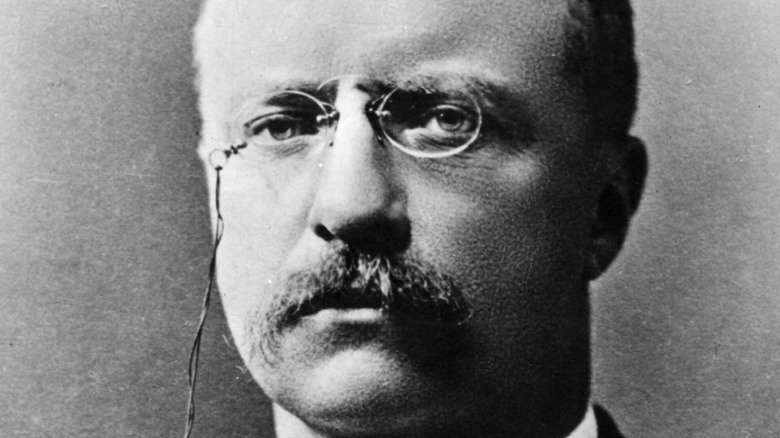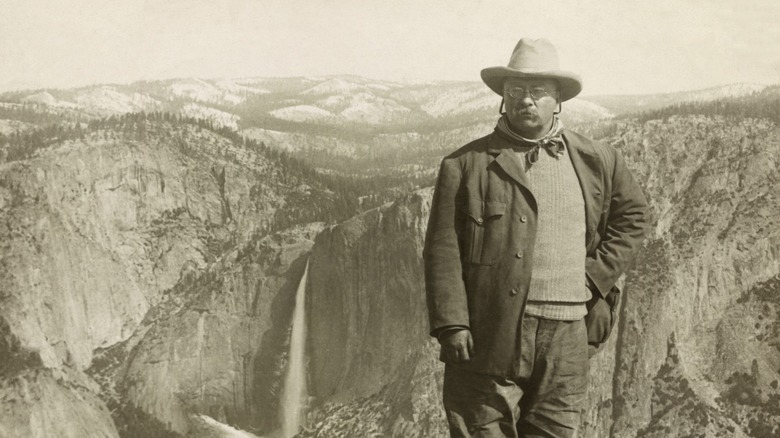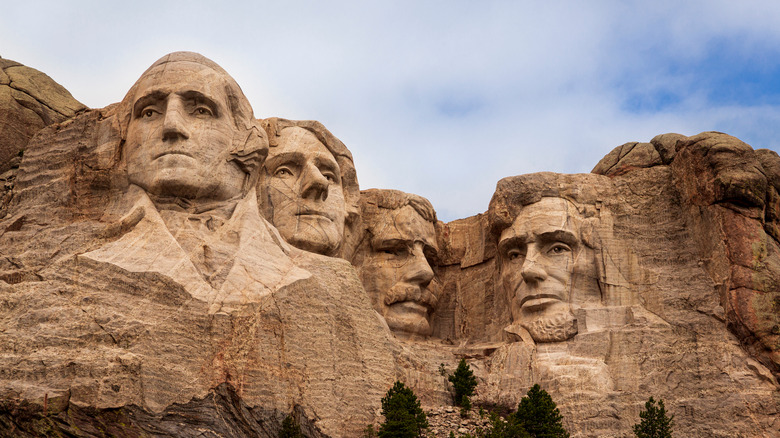Why Teddy Roosevelt's Legacy As The 'Conservation President' Is Well-Earned
Theodore Roosevelt is one of the most well-known presidents in United States history, and one thing he is known for is his conservation efforts of his nation's beautiful natural landscape and monuments. Some have gone so far as to give him the nickname "the conservation president," according to the National Park Service. During his presidency, Roosevelt established five new national parks: Crater Lake, Oregon; Mesa Verde, Colorado; Wind Cave, South Dakota; Sullys Hill, North Dakota; and Platt, Oklahoma.
On June 8, 1906, President Roosevelt enacted the Antiquities Act into law, which allowed the chief executive to establish national monuments across the country for historical or scientific purposes. This act paved the way for not only Roosevelt but other presidents after his term to expand upon his conservation efforts, cementing his legacy to this day. Roosevelt established four national monuments during his term, which included Devil's Tower, Wyoming; El Morro, New Mexico; and Montezuma Castle and Petrified Forest, both in Arizona (via National Park Service).
A life of adventure
Theodore Roosevelt had a history with nature before becoming president, and spending time in the outdoors was one of his favorite pastimes. When he was a young boy Roosevelt was very sickly, and as a result he believed that being in nature and doing rugged activities was the only way to overcome these health challenges, according to History. He often threw himself into the deep unknown whenever he could, even adventuring up an unmapped river in Brazil. As Roosevelt spent more time in the outdoors, he grew a deep appreciation for it.
During his presidency, Roosevelt often spent time with well-renowned conservationists to calibrate what the nation should do to protect its natural resources. One of those people was John Muir. In 1903, Roosevelt and Muir went on a camping trip through Yosemite National Park (via History) during which they discussed this issue, and when Roosevelt returned he made Yosemite Valley and Mariposa Grove a part of Yosemite National Park, according to the Department of the Interior.
Repercussions of conservation
Sadly, the conservation efforts of Theodore Roosevelt didn't come without pain for Native Americans. In order for many of these lands to be allocated for conservation purposes, the federal government forcibly removed native tribes. For a long time before Europeans arrived to the Americas, many indigenous peoples often used these lands for hunting, passing through or even living there themselves. However, after conservation efforts were made, they were forced onto reservations with very few natural resources, which caused pain and strife (via History).
Throughout Roosevelt's time as president, on top of the 18 national monuments and five national parks he created, he established 151 national forests, four national game preserves, and 51 federal bird reserves. Roosevelt is remembered for his conservation efforts in a multitude of ways, such as being included among the four presidential faces on the national monument Mount Rushmore. His love of nature allowed for generations after him to enjoy the beauties of the natural world, though at a great cost for the people who lived their first and once called that land home (via Department of the Interior).


